2016 Chevrolet Malibu: First Drive
Did Chevy finally crack the midsize sedan code that’s left previous Malibus lagging the competition?

What is it? An all-new version of Chevy’s stalwart midsize sedan
Price range? $22,500 to $31,795
Competitors? Honda Accord, Toyota Camry, Ford Fusion, Nissan Altima
Alternatives? Kia Optima, Hyundai Sonata, Mazda6, Chevrolet Impala
Pros? Comfortable and composed ride; plush, spacious interior; solid tech package and good fuel economy.
Cons? The base 1.5-liter turbo is a little small for the vehicle.
Would I buy it with my money? Yes, and I hated the previous edition with a passion.
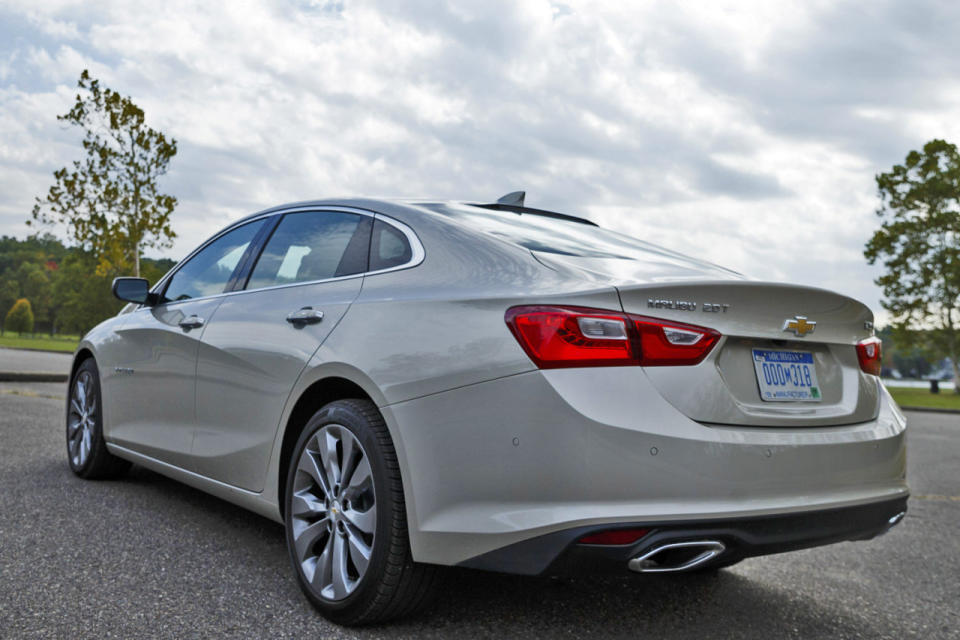
“Thrilling” is not an adjective I would normally use to describe an everyday midsize sedan. “Mundane,” “uninspiring” and “meh” are typically more applicable, and more frequently used, by car enthusiasts like me.
Which is our problem because midsize sedans are still hugely popular with consumers. The Toyota Camry remains the most popular car in America; U.S. buyers will snap up roughly 2.3 million midsize sedans this year, spending about $62 billion in the process. It’s the default choice for those who pride practicality and reliability over sex appeal, which is why the segment is filled with relatively commonplace machines designed to transport Mom, Dad and their 1.7 children to work, the grocery store and soccer practice safely and reliably.
The Chevy Malibu has been an also-ran in the midsize sedan segment for years, and a big disappointment for General Motors. (Just ask them. Surprisingly, they’ll tell you.) Bland styling, a poor ride, and a snug back seat have made it an easy target for critics and a poor choice for families. In fact, the current generation Malibu, which first hit the streets in 2012-13, was so repellant that Chevy sent it back to the drawing board for a facelift less than 18 months after the car rolled off the assembly line. Unfortunately, the move didn’t pay off. The “refreshed” Malibu was still a laggard. The car couldn’t keep up with increasingly inventive competition such as the stylish Hyundai Sonata and the Ford Fusion.
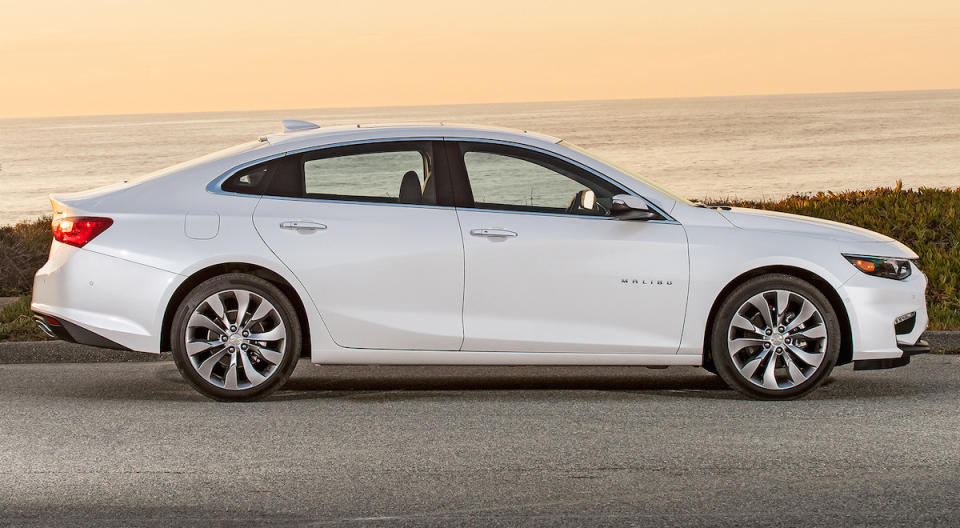
For 2016, Chevy hit the reset button. Redesigned from the ground up, the Malibu sports a fresh look, larger interior, new underpinnings and better engine options. It is superior to the model it is replacing in every way—and, surprisingly, muscles its way into comparisons with the midsize standard-bearers.
Thanks to completely new architecture underneath, the 2017 Malibu also rides on a 3.6-inch-longer wheelbase, which translates into a 2.3-inch bump in overall length compared over the outgoing model. Width remains the same at 73 inches. Cosmetically, the ninth-generation Malibu boasts a more aggressive front end, swept roofline like the Fusion and more athletic proportions a la its larger sibling, the Chevy Impala. The Malibu design team borrowed many styling cues from the Impala including the headlamps, front apron and the beltline creases. The goal was to create something unique, but still recognizable as a Chevy. The overall effect is pleasing, as the Malibu looks lower and wider with more sporting intent—and far more coherent than before.
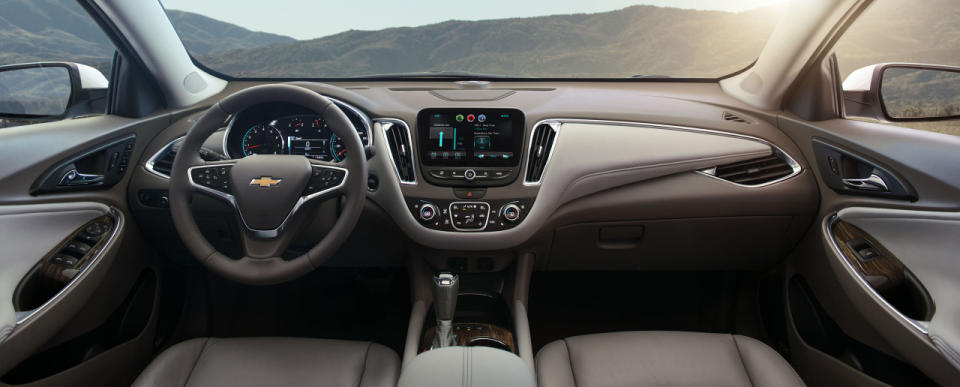
The size increase pays off in the cabin, where it was desperately needed. The interior feels much larger and airier than the outgoing model, even with the lower roofline. Rear-seat passengers get an additional 1.3 inches of legroom, making the backseat a little more comfortable for adults and a lot easier to enter, exit or check on a young one.
While more upscale materials are used throughout, they are mostly prevalent in the cockpit. Sadly, hard plastic still covers most of the interior surfaces up front, detracting from the car’s new premium feel. Chevy should have learned from its peers (Honda, Hyundai, Toyota, even Ford) and upgraded all of the materials, not simply covering frequently touched surfaces in leather and padding.
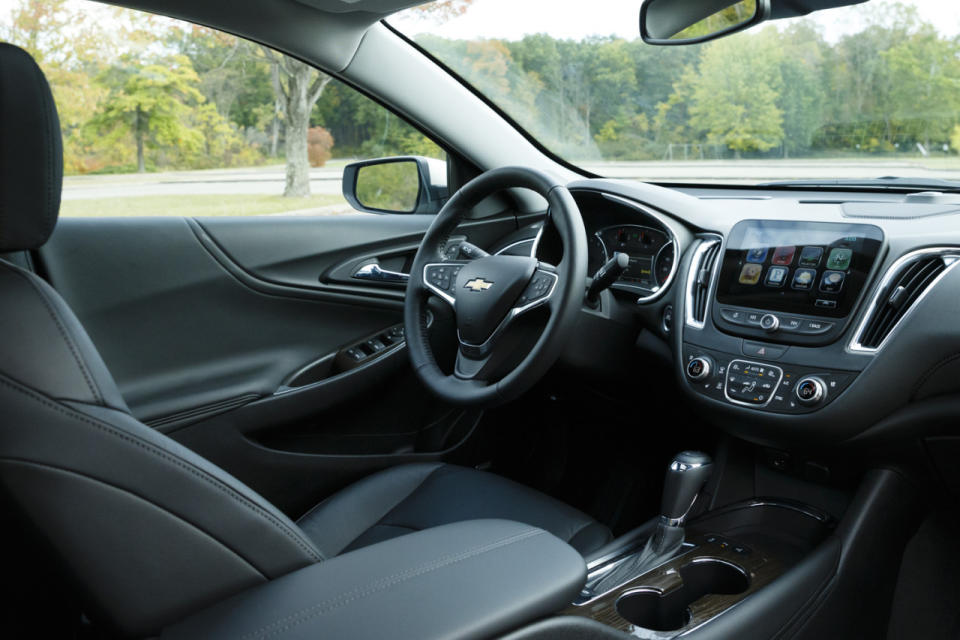
Materials aside, the cockpit is a serious improvement compared the previous model. The dash has a more high-tech look, but still easy to navigate, and the new center stack features fewer buttons and knobs as more systems are managed via the seven-inch color touchscreen, which is standard on lower trims. An eight-inch screen is standard on more premium trims.
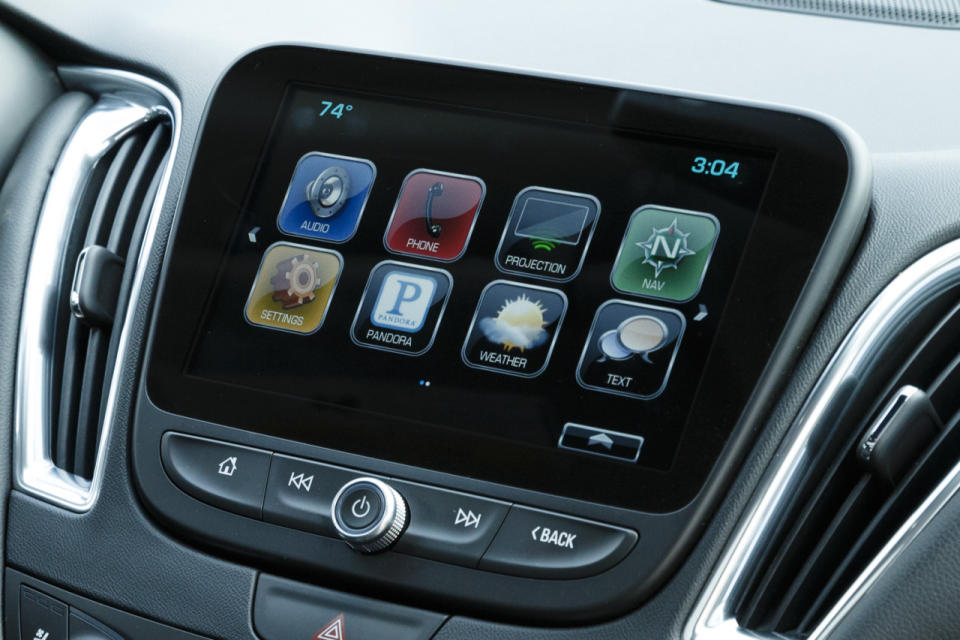
It’s equipped with one of the most comprehensive package of driver assist features I’ve seen on more “affordable” vehicles. The list: Pedestrian detection with automatic braking, lane-keeping assist, lane-departure warning, blind-spot monitoring, forward-collision warning with automatic braking, rear cross-traffic alert, automatic parking, automatic high beams, and adaptive cruise control.
Chevy is also offering a new PIN-protected Teen Driver feature that allows parents to monitor their kids’ driving and set speed-limit warnings, reduce the maximum sound-system volume level and more. No judgments, but this feature is a trust killer in my opinion. More importantly, Apple CarPlay, Android Auto and 4G LTE Wi- Fi capability is available on all Malibu trims, not just the most expensive ones.
Under the hood, the base engine is a new 1.5-liter turbo four-cylinder. Output stands at 160 hp and 184 lb-ft of torque, which is down 36 horses and two lb-ft relative to the previous car’s standard 2.5-liter four-banger, which developed 196 hp and 186 lb-ft of torque. Sadly, it’s also less powerful than most of its peers—in some cases, considerably lower.
However, according to Chevy, the new Malibu is 300 pounds lighter than the outgoing model, making it one of the lightest vehicles in the segment. Thus, performance shouldn’t suffer much, and doesn’t. While the vehicle does seem to work harder when tackling inclines and during more spirited driving, it never seems out of breath, and runs quiet. It’s paired with a six-speed automatic and comes standard with auto stop-start. Fuel economy improves to 27 mpg city and 37 mpg highway, increases of 2 and one mpg, respectively.
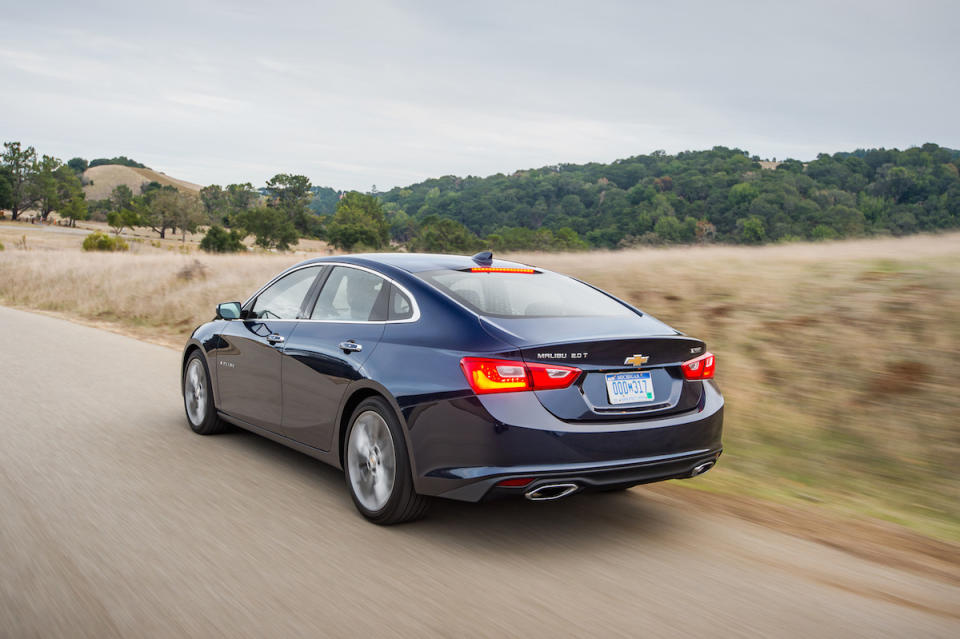
If more power is what you crave, a 2-liter turbocharged four-cylinder is also available. It is largely a carryover from last year, only re-tuned to make 250 hp and 258 lb-ft, 9 hp and 37 lb-ft of torque less than the outgoing 2.0-liter turbo, which developed 259 horsepower and 295 lb-ft. You’d think going with less power would be a bad thing. You would be wrong.
On the road, the Malibu delivers the goods better than it has in years, allowing it to catch up to its midsize competition. The ride is comfortable and the backseat usable, thanks to the longer wheelbase. The handling is more precise, thanks to the 16 percent improvement in torsional rigidity and reduced curb weight. Plus, the standard transmission was impressive. Shifts were smooth and pretty much seamless, sharpening when we got aggressive with the throttle. Though there is plenty of grip, there was more body roll than we’d like under aggressive driving and steering felt numb. But it was responsive and spot on.
The hybrid model returns, too, but not until the spring. An adaptation of the system used in the second-generation Volt, it consists of a new 1.8-liter 4-cylinder engine and two electric motors, capable of operating on electric power alone up to 55 mph, according to Chevrolet. It is expected to deliver a combined city/highway fuel economy rating “north of 45 mpg.”
In the final analysis, the all-new Malibu is an impressive evolution, with prices starting at $22,500 and running into the low $30,000s that appear competitive with the more popular competitors. For the first time in years, the Malibu deserves to be on the short list of many midsize-sedan buyers. Maybe it’s not thrilling, but it’s far, far better than “meh.”


